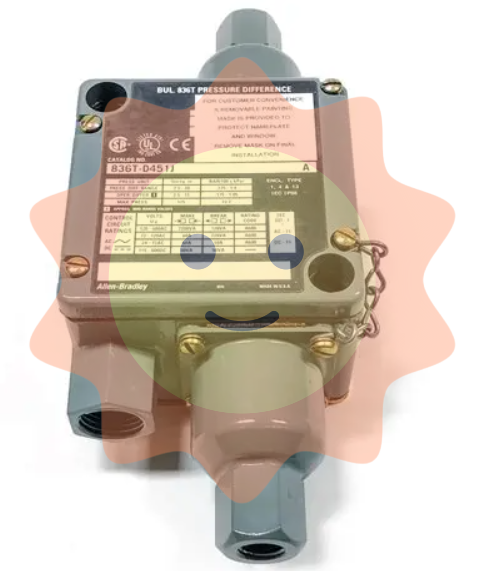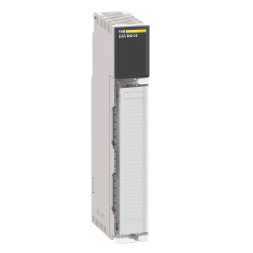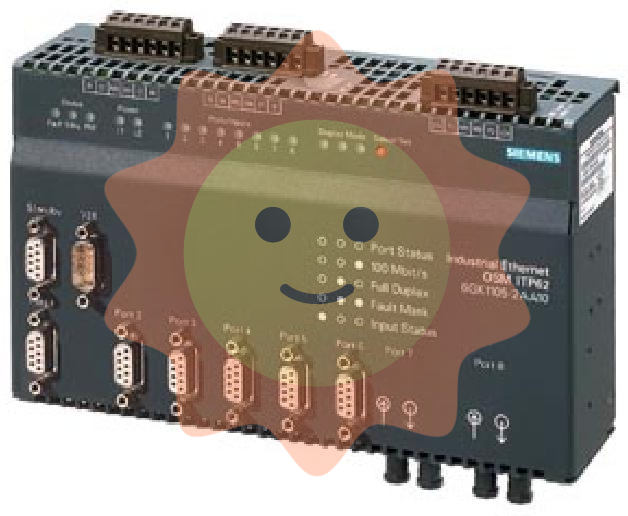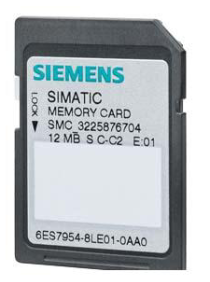In the architecture of high-power power electronics systems, the GVC736BE101 IGCT module plays a key role as the "power conversion core", connecting the AC power grid with loads (such as high-voltage motors and electric locomotive traction systems), and achieving functions such as AC and DC conversion (rectification/inversion), voltage level regulation, and reactive power compensation through the on-off control of IGCT devices. Compared with traditional power device modules, this module relies on the high-speed switching characteristics and low loss advantages of IGCT devices to achieve higher conversion efficiency and control accuracy in high-voltage and high current scenarios, while simplifying the system topology structure.
ABB 3BHE019719R0101 GVC736BE101 IGCT Module
Core positioning
In the architecture of high-power power electronics systems, the GVC736BE101 IGCT module plays a key role as the "power conversion core", connecting the AC power grid with loads (such as high-voltage motors and electric locomotive traction systems), and achieving functions such as AC and DC conversion (rectification/inversion), voltage level regulation, and reactive power compensation through the on-off control of IGCT devices. Compared with traditional power device modules, this module relies on the high-speed switching characteristics and low loss advantages of IGCT devices to achieve higher conversion efficiency and control accuracy in high-voltage and high current scenarios, while simplifying the system topology structure.
Core functional characteristics
1. High voltage and high current power conversion capability
The module uses IGCT as the core power device and has excellent high-voltage and high current carrying capacity. IGCT devices combine the high voltage withstand characteristics of thyristors with the gate control capability of GTOs, enabling safe commutation without the need for buffer circuits, greatly simplifying system design. This module can achieve current output of several hundred amps to several thousand amps in the medium and high voltage field (thousands of volts to tens of thousands of volts), and can directly adapt to the driving needs of high-power loads such as high-voltage motors and electric locomotives, without the need for multi-stage power unit series connection, reducing system complexity and cost.
2. High speed switch and low loss characteristics
The gate drive of IGCT devices adopts an integrated design, with a switching speed of microsecond level, far superior to traditional thyristors. It can achieve fast conversion and precise control of electrical energy, and is suitable for scenarios that require high-frequency regulation (such as reactive power compensation and power grid harmonic control). At the same time, the conduction loss and switching loss of the device are extremely low, and the power loss under rated conditions is reduced by more than 30% compared to traditional GTO modules. This not only reduces energy waste but also lowers the module's heat dissipation requirements, improving the system's thermal management efficiency.
3. Comprehensive integrated protection mechanism
The module has multiple built-in protection functions, providing comprehensive protection for power devices and system safety. When overvoltage (such as grid surge or commutation overvoltage) is detected, the built-in overvoltage clamp circuit will quickly operate to limit the voltage within a safe range; For overcurrent faults (such as load short circuits and device misleads), the module can quickly turn off the IGCT device through gate control and send a fault signal to the control system; In addition, the module also has temperature protection function, which monitors the junction temperature of the device in real time through a built-in temperature sensor. When the temperature exceeds the threshold, it automatically triggers derating or shutdown protection to avoid overheating and damage to the device.
4. Modular integration and convenient installation
The module adopts a standardized power module packaging form, integrating IGCT devices, gate drive circuits, protection circuits, and heat dissipation structures into an independent functional unit. The input and output terminals of the module are designed with high voltage insulation to ensure safe operation; The installation method supports standard guide rails or bolt fixation, adapting to the layout requirements of different control cabinets. Modular design not only facilitates system assembly and debugging, but also enables rapid replacement of faulty modules, shortens equipment downtime, and improves operation and maintenance efficiency.
5. Good electromagnetic compatibility and environmental adaptability
In response to the strong electromagnetic interference environment of power electronic systems, the module adopts multiple electromagnetic shielding and filtering designs, and the gate drive circuit achieves efficient isolation from the main circuit, effectively suppressing electromagnetic radiation generated during the switching process, complying with electromagnetic compatibility standards such as IEC 61800-3, and avoiding interference with surrounding equipment. At the same time, the working temperature range of the module is as wide as -40 ℃~125 ℃, supporting long-term stable operation in harsh industrial environments such as high temperature, low temperature, and high humidity, and adapting to the environmental requirements of different application scenarios.
Key technical parameters
The following are the core technical parameters of ABB 3BHE019719R0101 GVC736BE101 IGCT module. Please refer to the official product manual for details:
parameter category
Specific parameters
Core device parameters
IGCT model: 5SHX14H4500; Rated voltage (UDRM): 4500V; Rated current (ITAV): 1400A; Gate trigger current: ≤ 20A
Electrical Characteristics
Conduction voltage drop (IT=rated current): ≤ 2.5V; Switching time: turn-on time ≤ 3 μ s, turn off time ≤ 5 μ s; Surge current withstand (ITSM): 10kA (10ms)
Gate pole drive parameters
Drive voltage:+15V (on)/-10V (off); Drive power: ≤ 50W; isolation voltage: 5kVrms (gate main circuit)
protection function
Overvoltage protection: built-in clamp diode; Overcurrent protection: response time ≤ 1 μ s; Temperature protection: junction temperature protection threshold of 125 ℃
Heat dissipation characteristics
Thermal resistance (junction shell): ≤ 0.05K/W; Recommended cooling method: forced air cooling/water cooling; Maximum dissipated power: 3.5kW
working environment
Working temperature: -40 ℃~125 ℃ (junction temperature); Storage temperature: -50 ℃~150 ℃; Relative humidity: 5%~95% (no condensation); Protection level: IP20 (module body)
mechanical properties
Dimensions (length x width x height): 320mm x 180mm x 80mm; Weight: approximately 5.2kg; Installation method: bolt fixation/rail installation
certification standard
Compliant with power electronic device standards such as IEC 60747-10 and UL 1557
Typical Applicable Scenarios
1. High voltage frequency converter and industrial drive system
In high-voltage motor drive systems in industries such as steel, cement, and mining, this module can serve as the core power unit of high-voltage frequency converters. Through rectification and inverter control of IGCT devices, it converts power frequency AC power into adjustable frequency and voltage AC power, achieving soft start and speed regulation operation of high-voltage motors. Its high power density and low loss characteristics can improve the conversion efficiency of the frequency converter, reduce the energy consumption of motor operation, and adapt to the speed regulation requirements of loads such as fans and pumps, achieving energy conservation and consumption reduction.
2. Traction inverter for rail transit
The GVC736BE101 module can be used in the traction converters of high-speed rail, subway, electric locomotive and other rail transit systems to achieve the conversion of grid power and the required power of traction motors. For example, in a DC powered subway system, modules can invert DC power into adjustable frequency and voltage AC power to drive traction motors; In the high-speed railway system with AC power supply, the module first rectifies AC power into DC power, and then inverts it into AC power suitable for the motor. Its high-speed switch characteristics and high reliability can meet the strict requirements of traction systems for dynamic response and safe operation.
3. Reactive power compensation and power grid management equipment
In the reactive power compensation device (such as SVG static reactive power generator) and harmonic control equipment of the power system, this module can generate compensation current opposite to the reactive power and harmonic current of the grid through fast switching control of IGCT devices, achieving regulation of the power factor of the grid and suppression of harmonics. Its high voltage and high current characteristics can adapt to the needs of high-voltage distribution networks, improve the power quality of the grid, ensure the stable operation of power equipment, and reduce grid losses.
4. Industrial power supply and energy storage system
In large-scale industrial UPS power supplies and photovoltaic/wind energy storage converters, modules can be used to achieve bidirectional conversion of electrical energy. In the energy storage scenario, the module rectifies the electrical energy from the grid or new energy generation system into direct current and stores it in the battery pack. When discharging, the direct current is then inverted into alternating current and fed back to the grid or supplied to the load; In industrial UPS, modules can quickly switch to inverter mode to ensure uninterrupted power supply to loads in the event of grid failures. Its high reliability and fast response capability can ensure the stable output of the power system.
5. High power equipment for metallurgy and chemical engineering
In high-power equipment such as electric arc furnaces and rolling mills in the metallurgical industry, as well as large compressors in the chemical industry, this module can serve as a power control unit to achieve precise adjustment and stable control of equipment power supply. For example, in the electric arc furnace control system, the module can control the arc temperature by adjusting the output current to ensure the stability of the smelting process; In the drive system of the rolling mill, modules can provide smooth speed control, improving rolling accuracy and production efficiency.
Key points for installation and use
1. Installation specifications
Before installation, it is necessary to confirm that the rated voltage and current of the module match the system operating conditions to avoid damage to the components caused by hyperparameter operation; The module should be installed in a well ventilated location, away from flammable and explosive materials and strong corrosive environments, to ensure smooth heat dissipation; The installation surface should be flat and have sufficient load-bearing capacity. When fixing bolts, they should be tightened according to the specified torque to avoid poor contact caused by vibration; When connecting high-voltage terminals, it is necessary to strictly follow the insulation specifications, wear insulation protective equipment, and conduct insulation tests (such as shaking table measurement) after the wiring is completed to ensure that the insulation performance meets the requirements; The gate drive circuit needs to use shielded cables to avoid electromagnetic interference that may cause misleading communication.
2. Debugging and operation
1. Hardware inspection: After installation, check whether the module wiring is secure, whether the main circuit and gate drive circuit are short circuited or misconnected, and whether the cooling system (fan, water cooling pipeline) is installed in place.
2. Insulation test: Use a high-voltage megohmmeter to perform insulation testing on the main circuit of the module to ensure that the insulation resistance meets the requirements (usually ≥ 100M Ω/5kV). During the test, disconnect the gate drive power supply to avoid damaging the drive circuit.
3. Drive debugging: Connect the gate drive power supply, detect the amplitude and waveform of the gate drive signal through an oscilloscope, confirm that the on (+15V) and off (-10V) voltages meet the requirements, and ensure that the drive circuit works normally.
4. No load test: Connect the module to the system and perform no-load operation without load. Monitor the voltage, current, and temperature changes of the module, confirm that there are no abnormalities, and then gradually load it.
5. Load testing: Gradually increase the load to the rated operating conditions, test the output characteristics, losses, and temperature of the module, verify the effectiveness of protection functions (such as overcurrent and overvoltage protection), and ensure stable operation of the module under rated operating conditions.
3. Daily maintenance and precautions
Regularly (recommended monthly) check the cooling system of the module, clean the dust and debris on the cooling fins, ensure the normal operation of the cooling fan, and ensure that the water cooling pipeline is not blocked or leaking; Monitor the temperature of module terminals and heat dissipation surfaces quarterly using an infrared thermometer to confirm that there is no overheating phenomenon; Regularly check the fastening status of the wiring terminals to avoid looseness caused by thermal expansion and contraction; If there is a fault alarm during operation, the machine should be stopped immediately for troubleshooting. The control system should read the fault code (such as overcurrent and overheating), locate the cause of the fault, and then carry out maintenance. It is strictly prohibited to forcibly start the machine before the fault is resolved; When replacing a module, it is necessary to ensure that the new module model is consistent with the original module. After installation, it needs to be re debugged to avoid system failures caused by model mismatch.

- User name Member Level Quantity Specification Purchase Date
- Satisfaction :
-









Email:wang@kongjiangauto.com




































































































































